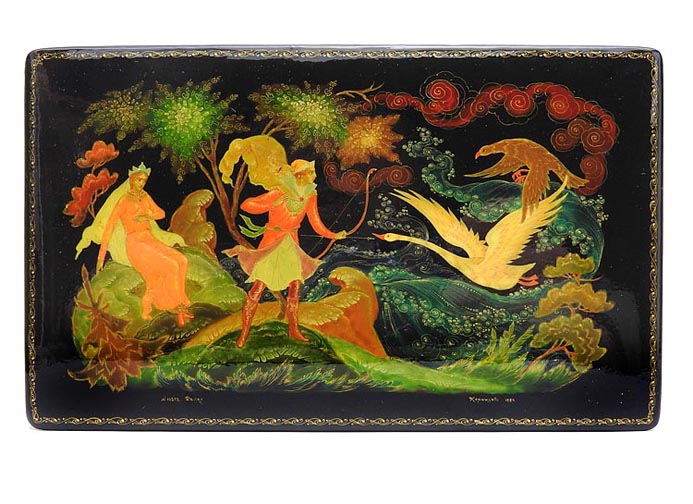Palekh
Posted by Maison Russe on Nov 10th 2021
Palekh was among the great art production centers that were decentralized during and after the collapse of the Soviet Union. This was deliberately planned and led to the physical destruction of the workshops, and the moral destruction of the well-being of the artists. Leadership was removed, physical assets were redistributed, and the goal was to create a commercial business. Thus the venerable "Palekh Art Works" was eliminated, and several independent companies were established. These included "Masters of Palekh", "Union of Palekh Painters" (by A. Dudorov), "Artists Workshops" (by V. Buldakov), and "Traditions of Palekh". All this, plus new factors, increased the "no-turning-back" complexity of the situation. For example, the building that housed the workshops, built in 1909, had its heating system cut off and workspaces dismantled. The production equipment of ancillary shops was demolished, vehicles were sold, and, all the while, the ruined empty workshops began to collapse. The building, which was on the balance sheet of the Palekh Tovarishchestvo LLC., become a haven for the homeless. The sublime art of Palekh lacquer miniatures incorporates the principles of Old Russian painting and folk art. One central issue of genuine concern, however, is that it's not at all easy to distinguish a fake box from a genuine box. At present, there are no copyrights for the use of names or schools of art. Many collectors are drawn in by a signature or a trademark, both easily faked. On an original lacquer box, the script on the bottom consists of the artist's signature and the name of the "village, which is synonymous with the artistic style. Genuine signatures are signed in melted gold. A Palekh box must have gold touch-up lines called "probeli" (пробели) which create volume. This is an artistic technique that was inherited from icon painters from the Vladimir-Suzdal region of Russia. It is an advanced skill, and not all Palekh masters can accomplish it well. On fakes, the gold is haphazardly applied, if at all. Another distinguishing feature of a genuine Palekh work is the use of multi-layer brushwork, known as "plavi" (плави). This technique is so sophisticated that painters who graduated from the five-year course at the Palekh Art School need additional years to master it. Other art techniques are involved, such as contour drawing, poliment (finely ground paint composed of ocher, burnt sienna and umber that serves as a lining under the gold to enhance the depth of tone), priming, lacquering and polishing, not to mention the labor intense creation of the papier-mache box itself. Special care is paid to the bodies of the subject (legs, arms, faces) and special figural properties were inherited from traditional icon painters. The artist must master the painting of houses, landscapes, trees, and floral objects. Other aspects to keep in mind is that to achieve the rich and traditional colors in a Palekh box, special paints are made from natural materials such as red clay, cadmium, volkonskoite, as well as ocher, burnt sienna and umber. These are mixed with water, vinegar and egg yolk to create tempera paints. Special brushes can consist of one squirrel fur hair. A genuine Palekh miniature is quite an artistic accomplishment. In the past, a number of prestigious and historical Palekh art exhibitions were conducted in the State Tretyakov Art Gallery in Moscow, in the Trinity-Sergius Lavra of Sergiev Posad, in the Cathedral of Christ the Savior, and in numerous art museums throughout Russia, including in Samara, Tolyatti, Tula, Vologda, Ryazan, etc. The Palekh branch of VTOO "Union of Artists of Russia" took part in the most prestigious and significant exhibitions of the Union of Artists of Russia. Today, state support for the development of Palekh art, including the acquisition of museum quality works, is long gone away. Artists who are engaged in genuine Palekh art are few, as low-grade fakes and reproductions flourish throughout the world. The continuity of generations of Palekh artists is so broken that it is in danger of perishing altogether.

